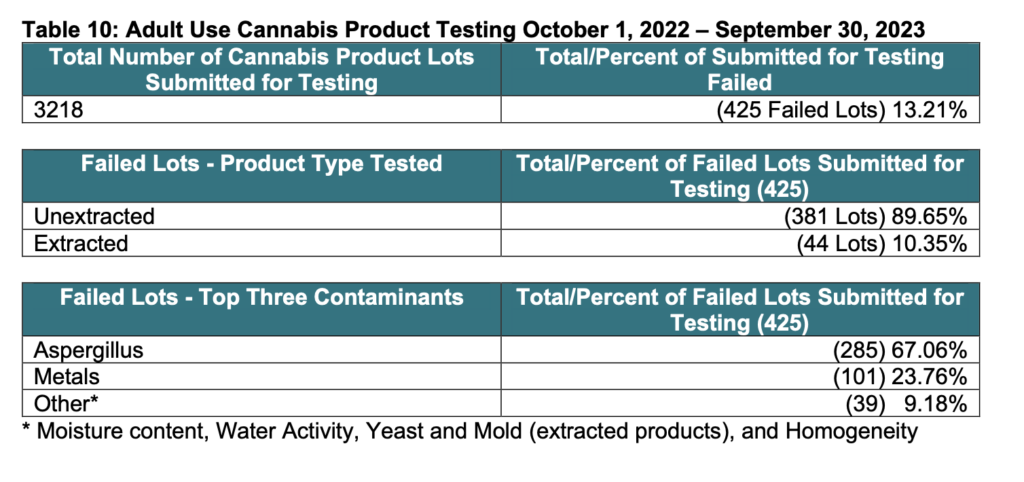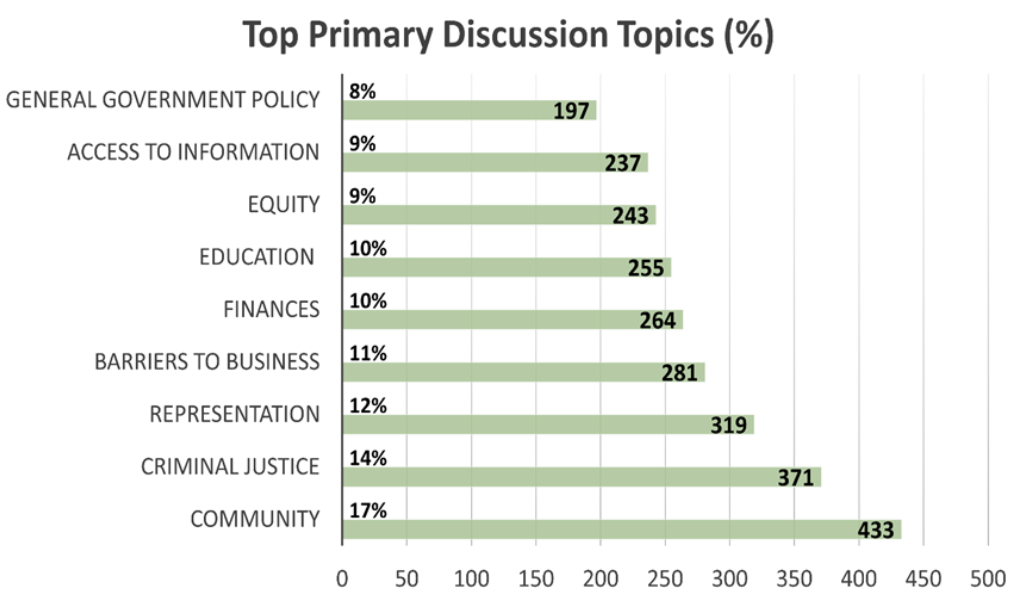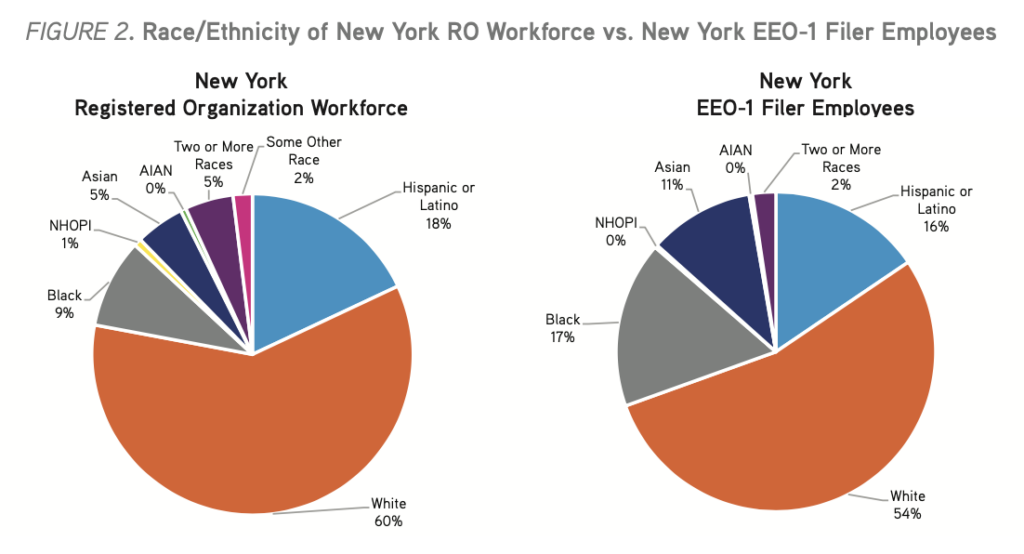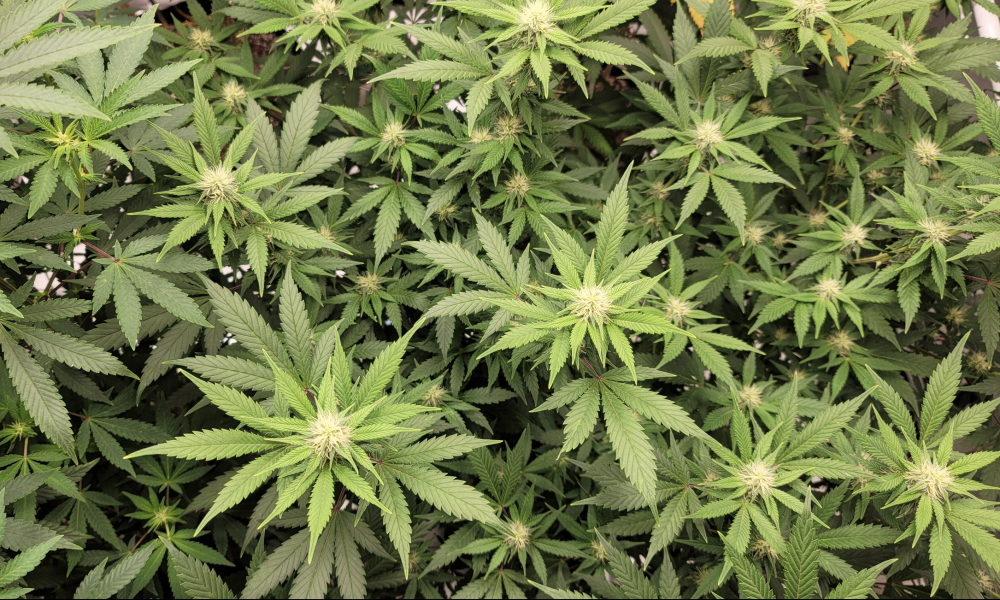A year after New York became the country’s second most populous state to commence adult-use marijuana sales, the Office of Cannabis Management (OCM) has released its latest annual report, along with a pair of separate documents focusing on equity in the industry and an enforcement against unlicensed operators.
The full annual report, which spans 91 pages, comes a few days after OCM offered a brief snapshot of the state’s first year of legal sales, highlighting that consumers purchased more than 3.5 million cannabis products during the year, with total sales expected to exceed $150 million once December’s numbers are tallied—an appreciable but somewhat slow start given that only 40 licensed dispensaries had opened for business across the entire state by 2023’s end.
🗽 #NYcannabis Market: pic.twitter.com/MZSP4u7aBI
— NYS Office of Cannabis Management (@nys_cannabis) January 1, 2024
New York’s rollout of legal marijuana sales, which kicked off in the final days of 2022, slowed to a crawl in 2023 amid lawsuits and a court injunction that that wasn’t lifted until early December and barred regulators from processing hundreds of new retailer licenses. The situation created a bottleneck in the market, leaving growers without enough retail products to move their products.
OCM leaders nevertheless pointed in the annual report to numerous milestones New York achieved over the past year, including on social equity and taking steps to expand the fledgling market in spite of obstacles.
“New York is building a licensed cannabis market unlike anything we have ever seen before,” OCM Executive Director Chris Alexander wrote in a statement at the beginning of the report. “Although we have encountered adversity, we have known all along that the Marihuana Regulation and Taxation Act created a legal cannabis industry that disrupts the status quo for the better.”
“While not all licenses we have issued are operationalized yet, we have issued over 700 licenses to largely social and economic equity entrepreneurs,” he added, emphasizing the state’s interest in building an equitable marijuana industry. “At the start of the year there were approximately 20 Black-owned dispensaries across the entire country. New York just opened 12 more.”
This past October, the state also opened a general licensing window to the public, “allowing all New Yorkers the opportunity to apply for an adult-use license for the first time in our state’s history,” Alexander said. Hundreds of licenses to conduct businesses in the industry are at stake.
In 2023, he wrote, OCM “evolved from a brand new state agency to a fully operational cannabis regulatory body.” In 2024, regulators, operators and consumers want to see the state’s retail system undergo a maturation process of its own.
Tremaine Wright, chair of the Cannabis Control Board (CCB), the body that oversees OCM, wrote in the report that “all this hard work is only the beginning of what’s to come.”
OCM Annual Report
The annual report begins with a top-level list of legalization “by the numbers,” providing the following statistics about the market, most of which were included in last month’s preview report:
- Nearly 6,200 Licenses, Permits, and Registrations issued or provisionally approved in State Fiscal Years 2022-2023 and 2023-2024
- 279 Adult-Use Conditional Cultivator Licenses
- 40 Adult-Use Conditional Processor Licenses
- 463 Conditional Adult-Use Retail Dispensary Licenses
- 5,404 Cannabinoid Hemp Licenses and Permits
- 10 Registered Organizations approved, 1 renewal pending
- 41 Adult-Use Retail Dispensaries open for business
- 60 Cannabis Growers Showcases approved
- Over $137 million in retail sales [as of December 9, 2022]
- Over 3.5 million units sold
- Nearly $16.3 million in revenue in State Fiscal Year 2022-2023
- Over $16.6 million in revenue by the mid-point of State Fiscal Year 2023-2024
- 369 enforcement inspections of illicit operations
- 11,600 pounds of illicit products seized
- $56 million street value of products seized
- 6,934 Adult-Use License applications received
- 932 field hours of compliance inspections
- Over 121,900 patients registered with the Medical Cannabis Program
💵 #NYcannabis Market: pic.twitter.com/InwESK3v16
— NYS Office of Cannabis Management (@nys_cannabis) January 1, 2024
A top highlight is social and economic equity, which the report describes as “central to all of the Office of Cannabis Management’s efforts.”
“In order to begin the work of repairing decades of over-criminalization and disproportionate enforcement of cannabis prohibition—especially in Black and Brown communities,” the report says, “the Office is hard at work ensuring that those harmed are given an equitable chance to participate and thrive in the new legal New York State (NYS) cannabis industry.”
Among other highlights, CCB and OCM noted that they approved a social and economic equity plan in May of last year and later issued guidelines on what constitutes a community disproportionately impacted by marijuana prohibition, one of a number of qualifiers for priority social and economic equity business licenses. Among other findings, Census tract data demonstrated “that approximately one quarter of NYS’s population experienced three quarters of the marihuana-related arrests over the past four decades,” the report says.
Other state equity efforts over the past year included a mentorship and training program, which concluded in late April and included 241 participants, 43 percent of whom were “from diverse racial backgrounds” and 26 percent of whom were female. “The cohort was an engaged group,” authors wrote, “with a notable program completion rate of 97.5%.”
The office worked to provide technical assistance to equity applicants when license applications opened to the general public in October, creating a Cannabis Hub and Incubator Program and working with “key community stakeholders”—including 25 organizations and 75 individuals—to provide pro bono application assistance to more than 650 applicants statewide.
New York is also about halfway through expunging more than 400,000 criminal convictions eligible for expungement under the state’s legalization law, says the annual report, noting that 202,189 convictions had been sealed as of September 30, 2023. “As a result of the marihuana-related offense being their only conviction,” it adds, “24,400 individuals no longer have a NYS criminal record barring them from seeking employment, housing, or professional licensure.”
As the state gears up to drastically expand its adult-use market, regulators began accepting cultivator, processor, distributor, retail and microbusiness applications in October, receiving 6,934 applications by a mid-December deadline. Future applications windows are forthcoming for nursery, delivery, cooperative or collective and on-site consumption licenses.
“As retail storefront sales rose month over month in 2023, from $2.2 million in January to $18.8 million in November, a picture of the scale of demand across New York has emerged,” the report says.
Amid the adult-use rollout, regulators have also been working on the state’s existing medical marijuana system, for example approving new regulations in February that implemented an auto-registration process, under which people who receive a doctor’s recommendation for cannabis are automatically registered in the state system, “allowing them to go directly to a medical cannabis dispensary.”
OCM
Over 121,900 patients were registered in the state’s medical program at the end of September, the OCM report said. That the figure fell slightly over the past year. According to a two-year medical cannabis report issued by the office last year, there were 123,052 patients with active registrations as of December 31, 2022.
In terms of public safety and health, the board approved 16 independent laboratories to test medical and adult-use cannabis products. The state also filed adopted emergency cannabinoid hemp regulations December limiting the amount of THC and other cannabinoids that can be sold in hemp-derived products.

OCM
When it comes to recommendations for the industry, the OCM report said the state should continue to update its social and economic equity plan, “ensuring it is a living document that reflects the current environment and priorities.”
New York should also establish additional supports to expand enforcement efforts against unlicensed retailers, it said, noting that while “some unlicensed cannabis shops may seem legitimate to consumers, they undermine NYS’s ability to build a truly equitable market with the power to deliver new resources to schools and communities disproportionately impacted by cannabis prohibition statewide.”
Other health and safety efforts should include investments in public safety and monitoring of public health outcomes, the office said, as well as in addressing gaps in public education as well as scientific understanding of the substance and its health effects.
Among other recommendations are that the state continue to prioritize expanding and strengthening its medical marijuana system, conduct background checks on license applicants, expand the definition of crops and livestock to include cannabis to “normalize cannabis as a legitimate crop” and allow for certain tax deductions, continue to monitor environmental impacts of the new industry and allow adults to grow marijuana at home for personal use.
At the federal level, OCM said that passing the Secure and Fair Enforcement Regulation (SAFER) Banking Act “would provide legal protections to financial institutions that work with state licensed cannabis businesses, addressing some of the risks of operating cannabis businesses on an all-cash basis.”
It also recommended measures be taken at the federal level to fill regulatory gaps around hemp-derived cannabinoids left by the 2018 Farm Bill, which legalized hemp nationally but was largely silent on regulations. “Without federal oversight, states have developed their own unique approaches to mitigating the public health and safety concerns caused by intoxicating cannabinoid products, leading to confusion and lawsuits throughout the country regarding which hemp-derived products can be sold state by state,” the report says.
Finally, the report advised “advocating for changes to federal laws to create less stringent requirements around cannabis research, including allowing any state licensed entity to provide cannabis for research being conducted within that same state.” Currently researchers have to use workarounds that impact the scientific integrity of studies or rely on a tiny number of sources approved by the National Institute of Drug Abuse (NIDA). “Limiting researchers to NIDA-approved cannabis sources is problematic due to concerns about the quality of cannabis from existing suppliers, limited supplier concerns, and because it inhibits the researcher’s ability to study products currently available on the market.”
As for administering New York’s cannabis system, OCM hired 46 full-time equivalent (FTE) staff in 2023, bringing the agency’s total headcount to 162 FTEs at the end of the year.
The report also details contracts the office entered into with third parties, for example paying Bio-Tech Medical Software nearly $4 million for a seed-to-sale tracking system and Google more than $11 million for “cannabis application system support.” Other large expenditures included $5 million for media campaign ad placement and $1 million to Cornell University for “cannabinoid hemp research support.”
Chief Equity Officer Annual Report
OCM’s separate 19-page Chief Equity Officer Annual Report digs into further detail on social equity in the state and paints a more granular picture of efforts being undertaken by the state’s social and economic equity team, which over the past year “has conducted research, engaged with community members, provided regulatory oversight, and developed programs and initiatives in economic development, policy, research, small business support, and business incubation.”
Drawing from roundtables and other community events, OCM identified the following issues to be addressed in the office’s social and economic equity plan, released in May:

OCM
The equity team consists of three deputy directors, eight permanent staff and five temporary staff who “work on initiatives and programs related to economic development, policy, research, small business services, and business incubation.”
Among other initiatives, staff worked to promote access to licensure, identify areas in the state that continue to be underserved by the state’s medical marijuana system and educate lawmakers about the challenges of cannabis banking.
The team also oversaw technical assistance and training programs, providing 40 distinct workshops, 20 weeks of pre-recorded content available online, mentoring, consultations with financial specialists and other services to around 300 licensees. Going into 2024, the report said, staff are pursuing a contract expansion that would allow the office to reach 450 more equity licensees.
Disparity in Workforce and Ownership in New York’s Medical Cannabis Industry Report
In addition to the strong focus on equity in OCM’s annual report and the standalone report from the office’s chief equity officer, the agency also released a 48-page Disparity in Workforce and Ownership in New York’s Medical Cannabis Industry report, prepared by SUNY’s Rockefeller Institute of Government.
The report looks at the makeup of 10 so-called registered organizations (RO), which are vertically integrated companies that operate 38 medical dispensaries in the state, describing the findings as “a snapshot of employment and ownership in New York’s medical cannabis industry in 2023.”
Among other findings, authors noted that men are disproportionately represented among RO employees, at 59 percent. That’s higher than at other private employers, where men on average make up 48 percent of workers.
Women, meanwhile, were “relatively well represented in RO management roles, filling 45.2 percent of the total positions” and also “make up a larger portion of the RO professional workforce segment than males (53 percent and 46 percent),” according to the report, which does not distinguish between sex and gender.
“Females represent 39.9 percent of the sales workforce in ROs,” it added. “Females are underrepresented in both technical and support titles with 32.1 percent of employment in both.”

OCM
As for race, nearly 6 in 10 members (59.9 percent) of New York’s medical cannabis industry are white, compared to about 54 percent of all employees in New York State. “Non-Hispanic white employees are the single largest racial/ethnic group across all occupation classes and make up the majority of employment in management (78.8 percent), support (70.4 percent), technical (69.7 percent), and professional (61.3 percent) occupations,” the report says.
People of color, meanwhile—including those identifying as American Indian or Alaskan Native, Asian American or Pacific Islander, Black or African American, and multiracial—”are all less likely to be employed in cannabis-related industries than in other industries,” it found.
Inaugural Enforcement Report
In another supplementary report, from OCM’s Director of Enforcement Daniel Haughney, the agency outlined its enforcement efforts against unlicensed and illicit marijuana operators in the state. Amid the state’s slow rollout of licensed stores, illicit shops have proliferated—a trend commonly seen in other jurisdictions.
Since a new law in May gave OCM and the state’s Department of Taxation and Finance authorization to take action against unlicensed actors, authorities have conducted more than 350 inspections “resulting in seizures of illicit cannabis and cannabis products valued at more than $55,000,000,” Haugney said.
“We are pleased to report that 2023 also saw the first closure orders issued from county supreme courts,” he added. “These orders allow us to physically padlock and shutter illegal cannabis retail locations.”
⚖️ Enforcement: pic.twitter.com/ayRk8jLM0o
— NYS Office of Cannabis Management (@nys_cannabis) January 1, 2024
As of December 15, the office said, OCM enforcement and its agency partners had conducted over 369 inspections, including 103 re-inspections “of locations believed to be selling cannabis without the required license.”
“As a result of these inspections, 305 notices of violation/ orders to cease were issued and over 11,600 pounds of illicit products with an estimated street value of $55 million were seized,” the report says. “As of December 15, 2023, $1,312,500 in fines had been levied against unlicensed operators following decisions issued through the administrative hearing process.”
In other marijuana-related news out of New York, the state’s Department of Labor in December published dozens of sample job descriptions for positions in the legal industry, which officials said are intended to help companies streamline hiring processes and allow prospective employees to assess their qualifications to work in various roles within the emerging cannabis industry.
In October, the New York Senate Cannabis Subcommittee, which was established in April and is being chaired by Sen. Jeremy Cooney (D), heard from witnesses and discussing potential legislative solutions to the state’s ongoing cannabis legalization implementation problems.
Gov. Kathy Hochul (D), meanwhile, recently signed legislation in November that attempts to make it somewhat easier for financial institutions to work with state-licensed cannabis clients. She also signed a separate bill that’s meant to provide tax relief to New York City marijuana businesses that are currently blocked from making federal deductions under an Internal Revenue Service (IRS) code known as 280E.
While Hochul signed an earlier budget bill in 2022 that included provisions allow state-level cannabis business tax deductions—a partial remedy to the ongoing federal issue—New York City has its own tax laws that weren’t affected by that change. The new measure is meant to fill that policy gap.
Hochul also recently vetoed legislation that would have allowed hemp seeds to be included in animal feed for pets, horses and camelids such as llamas and alpacas.
In September, 66 state lawmakers—about a third of the entire state legislature—also wrote to Hochul urging her to sign a bill that would allow licensed marijuana producers to sell products to tribal retailers. The plan would offer a release valve to hundreds of cannabis farmers who are currently sitting on surpluses but have no place to sell their products.
Last month, however, Hochul vetoed that bill.
State regulators are also working to debunk what they say is the “false” narrative that cannabis is commonly contaminated with fentanyl—a “misconception” that remains “widespread” despite a lack of evidence. OCM recently put out a factsheet on the issue, acknowledging that while fentanyl has been found in drugs like MDMA and heroin, anecdotal claims about marijuana laced with the potent opioid are so far unfounded.
The state’s Office of Addiction Services and Supports (OASAS) also recently revised guidance around THC testing for people in treatment for substance use disorder, advising marijuana screening only in cases where “the patient has identified a reduction in, or cessation of cannabis as part of their treatment goals.”
Following the post-Thanksgiving Black Friday, regulators encouraged people to take advantage of the deals and support small businesses by shopping for cannabis at licensed retailers.
New York Local Governments Could Shut Down Unlicensed Marijuana Businesses Under New ‘SMOKEOUT Act’ Bill
Photo courtesy of Mike Latimer.
Read the full article here









